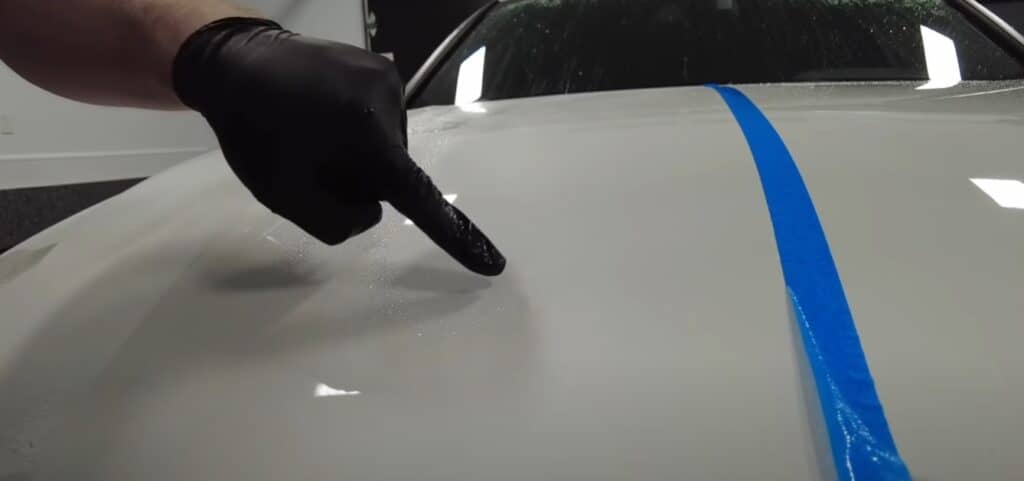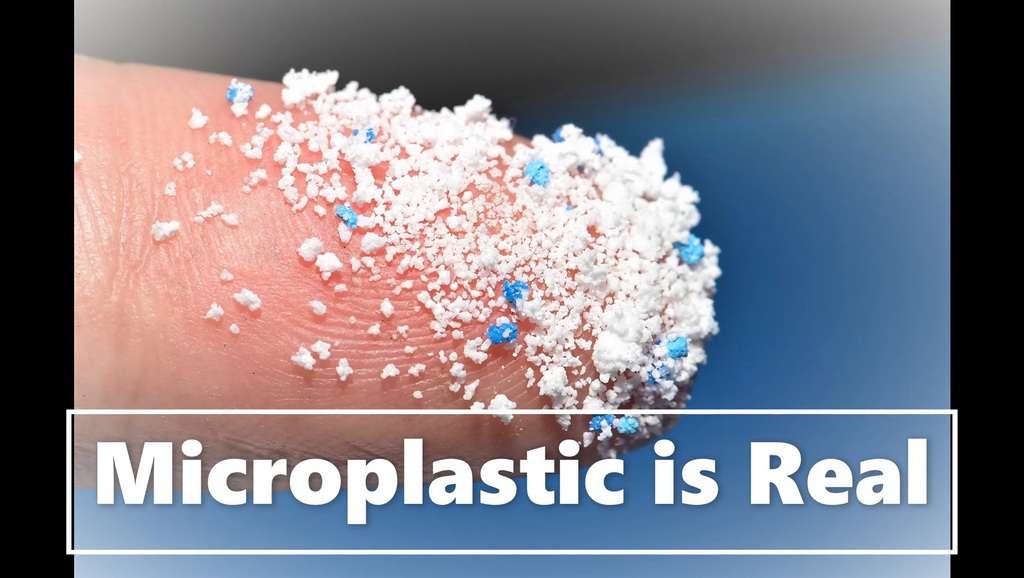Testing a super-tough product to the moment where it meets its breaking-point is one of the many joys of being a YouTube product tester, even when your “little science experiment” doesn’t go according to plan, or you accidentally take things a tad too far.
Want to see how much abuse a pair of tactical pants can handle? Send them through a trash compactor, or throw them to a litter of pitbull pups begging for a new chew toy. Remember when Mercedes-Benz claimed that the first 4×4² version of the G550 Geländewagen was the most capable street-legal Benz ever built? Some reviewers got one for a week in order to put it through its paces at the local off-road park.
Such was the case when YouTube car detailing and all around detail-oriented influencer, Pan The Organizer, took a previously installed layer of AvalonKing’s Armor Shield IX nano ceramic coating, and gave it one hell of a shakedown.
How did the world’s highest rated consumer-grade ceramic coating fair after being thrashed by all that is chemically abrasive? Well you’ll just have to keep on reading to find out…
What Does AvalonKing Armor Shield IX Reject and Resist in Everyday Life?

By design, a quality-grade, 9H-rated nano ceramic coating should not just create a shiny finish on all kinds of surfaces, but turn them into a super slick surface as well. This allows the coating to reject a vast majority of the contaminant-rich bullshit thrown at it, as well as things like overzealous washes down at the local car wash.
Although having a 9H-rated ceramic coating resistance rating reduces the risk of scratches, it is the hydrophobic properties within a ceramic coating’s mirror-like shine that make it impressive.
Some examples of the ilk Armor Shield IX DIY ceramic coating resists and rejects includes: Bird turds, tree sap, UV rays, acid rain, road grime, berry stains, bug splatter, dust and dirt, and a crowd of other crap. There’s even the possibility that Armor Shield IX will reject the bat-shit-crazy slurs slung at your rear bumper by an equally batty ex, as they slowly disappear in your rearview mirror.
Oh, and as for damage incurred from man-made chemical exposure, Armor Shield IX hosts the ability to send things like graffiti (both in spray paint and permanent marker form) packing, as well as deicers, brake dust, road salt, exhaust soot, and a host of other gunk.
What Are the Strengths and Weaknesses of a 9H-Rated Nano Ceramic Coating?

Albatross droppings and incoherent slurs aside, real world inquiries about Armor Shield IX’s ceramic coating resilience levels have more to do with the following everyday issues than anything else.
While nano-technology definitely makes maintenance a cinch, and boosts things like gloss and shine, it is a ceramic coating’s ability to reject the harmful contaminants listed in the previous section that make it truly unique.
But whereas directly dousing ceramic coatings with water in order to determine if the formula prevents water spots from forming is indeed a legitimate source of interest, hitting surface coatings with harsh chemicals seems far more… exciting.

Man-made chemicals, and the chemical compounds contained within their molecular layers, run the risk of leaving chemical stains on surfaces, which makes them a risky DIY endeavor for those looking to torture test a product. Simply put: Acid-rich chemicals are the Achilles heel for 9H-rated nano ceramic coating.
Quick Tip: When it comes to working with chemicals, always do your research before trying something new. Utilizing proven ceramic coating removal methods and appropriate chemicals will prevent you from hammering the hell out of your vehicle’s clear coat and painted porous surfaces.
The Armor Shield IX Torture Test Explained
Armor Shield IX may be an outstanding surface protectant, but contrary to common ceramic coating misconceptions, it is by no means immune from environmental contaminants occasionally sticking to its outer shell.
This explains why Pan The Organizer opted to stick with torture testing Armor Shield IX with products that one might routinely use to remove everyday airborne contaminants and road grime from a vehicle’s exterior.
“Chemical torture tests are also
-Pan The Organizerto simulate real world applications, to see if the protection can resist actual products that you are going to use on your paintwork.”
We’re talking bug removers, tar removers, iron removers, water spot removers, and even citrusy multi-purpose degreasers. Chemicals that are great for getting gunk off your ride, but cause a lesser ceramic coating’s protectant finish to shit the bed.
Knowing what surfaces ceramic coatings can protect, and where they tend to fall short isn’t everything though. Documenting a ceramic coating kit shake-down with an array of chemicals provides vital information about the real-world resiliency of a product. Which is precisely why Pan The Organizer conducted a chemical resistance test three months after coating a BMW with Armor Shield IX.
Some of the products used in Pan The Organizer’s chemical torture test included:
- CarPro “Bug-Out” Bug Remover
- Gyeon Tar Remover
- P&S Iron Buster Iron Remover
- The Last Coat ClearSR Water Spot Remover
- Shaeffer’s Citrol 266 Degreaser
How Armor Shield IX Performed During the Chemical Resistance Test

Being that AvalonKing formulated Armor Shield IX to coat exterior surfaces with 84% SiO2 (silica/silicon dioxide), chemical resistance levels remained extremely high during Pan’s torture test.
All those little beads of moisture sitting on the surface in the chemical resistance test not only showcased Armor Shield IX’s strengths, either. It also created a visual representation of how one of the highest ceramic coating SiO2 concentration levels on the market makes.
In the video, CarPro “Bug-Out” Bug Remover, Gyeon Tar Remover, P&S Iron Buster Iron Remover, and the ClearSR Water Spot Remover from The Last Coat were all rejected and rinsed away without issue. In fact, there was no visible sign of decomposition across the hood’s glassy ceramic finish, at least, all the way up until the Shaeffer’s Citrol 266 Degreaser was put into play.

Cleaners of this caliber are not something that you would normally spray on your vehicle, as Pan himself even said, “Would you honestly use acid based cleaners on your paintwork? Heck you wouldn’t even use Citrol, which is way too powerful.”
However, as one viewer noted after watching the video, the coating of Armor Shield IX “…took a slight hit with the Citrol… it can probably be easily revived with something like an SiO2 spray.”
This is precisely why we have rolled-out our own AvalonKing SiO2 Ceramic Booster Spray, for rejuvenation is vital when it comes to replenishing the lifespan of a nano ceramic coating.
Parting Shots

While the forums remain filled with DIY detailing chatter about different experiments with “controlled durability/longevity testing,” guys like Pan the Organizer and Silver Cymbal, are actually taking products like Armor Shield IX, and pitting them against some serious real world adversaries.
The proof is in the proverbial pudding too. AvalonKing’s Armor Shield IX retains one of the most effective formula compositions in the nano ceramic coating market, and thanks to its ease of application, continues to rule the DIY ceramic coating roost with an iron fist.
“Wow. It even resisted Citrol 266!”
-Pan The Organizer
Does it withstand every imaginable chemical and contaminant attack known to mankind? Hell naw. But Armor Shield IX sure does create one slick-ass hydrophobic surface for that glossy finish you crave, all while rejecting most of the deep cleaning chemicals uninformed DIYers are eager to spray any given day.













1 comment
Latulippe
Bonjour
Je vois que c’est un bon produit,mais ça prend 2 contenant pour
faire un VUS ça commence à être dispendieux.
Merci
Bonjour
Je vois que c’est un bon produit,mais ça prend 2 contenant pour
faire un VUS ça commence à être dispendieux.
Merci